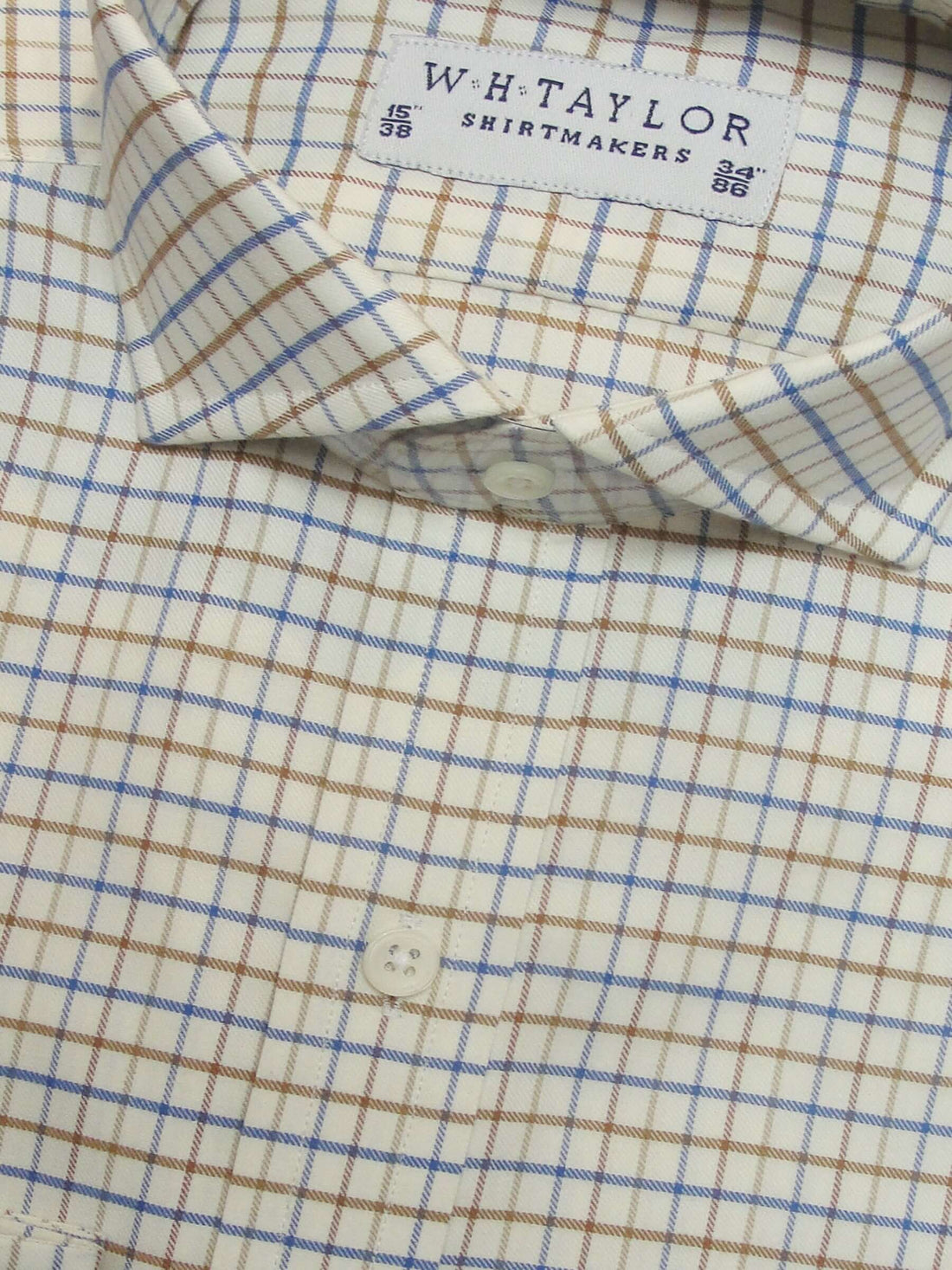
Most Popular Checks In Mens Shirting
Share
A Check is defined by horizontal and vertical lines, mixed in different forms to create various patterns. With a whole range of checks available in cloth, we thought we would take some time to describe the most popular checks used in men’s shirting.
Graph
A simple pattern of evenly spaced squares on a plain coloured background, usually white. Named so due to the likeness to Graph Paper, it can also sometimes be known as a box check. This style check is perhaps the easiest to include in business attire, it works well under a suit and can be layered with other colours and textures as well as worn well with a tie. While Graph Checks can vary in size, they are usually around ¼ inch. Graph Checks
Gingham
Gingham, Like the Graph Check is a very simple check of evenly spaced lines over lapping at evenly spaced distances. The Lines are thicker than graph, and thus where they overlap a deepening of colour is seen giving a checkerboard feel to the check. Gingham was traditionally seen in Blue, however nowadays you can find a much punchier array of colours worn by the modern man. Here at W H Taylor Shirt Makers we stock a range of colours you can find here - Gingham Checks
Houndstooth
Sometimes known as a Gun Club Check or Dogtooth, Houndstooth has a long heritage amongst the upper classes being worn for outdoor pursuits. A very similar check to Gingham in form, the difference is the use of two or more colours overlapping to create the check, creating a kind of camouflage perfect for use in the outdoor activity such as shooting, fishing and the like. Said to be the oldest found piece of cloth with a checked pattern, a version of houndstooth was found in the 1980s that originated between the 15th-16th Century. It was found in a Peat Bog and is likely to have belonged to someone of lower class who worked outdoors, given the rough nature of the fabric. Houndstooth
Windowpane
The Windowpane Check is a classic in shirting, often found in men’s suiting as well as Jackets and the like. It’s a simple check made up of elongated rectangles giving the impression of windowpanes – hence the namesake. A smart check that can work alongside other check styles and plain fabrics alike. Here is a link to our collection - Windowpane Checks
Tattersall
The Tattersall Check is named so after historically being the pattern found on horse blankets in the late 18th Century. It has since become a popular pattern in shirting and is synonymous with traditional British country wear. Often seen as part of formal outfits used for outdoor pursuits and worn alongside more robust outer garments of tweed. The Check itself is made up of two or more lines, can be varying in colour, line size, thickness, and amount (i.e. they can overlap) however the defining feature is that the checks are always uniform. Tattersall
Plaid
Plaid, otherwise known as Tartan is perhaps the most complex of checks given its varying array or form and colour. Created with various line widths, intersecting at a range of different points – the shapes created by tartans are hugely variable, as are the colours used. Originally created by different ‘Clans’ from the highlands of Scotland to distinguish them in battle, and worn on Kilts, some Tartans have been around for centuries. A usually informal check that is often seen in accessory items as well as shirts, Plaids are usually found in thicker shirting fabrics like Oxford and Brushed Cottons. You can find our collection here - Plaid
